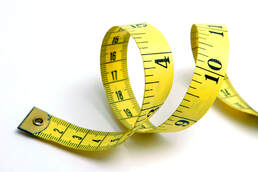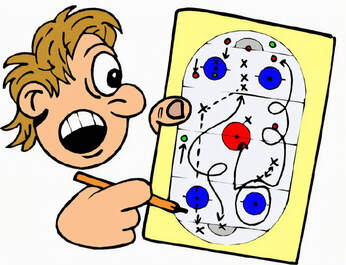 Are you familiar with SMART objectives? They were a big thing back in the 80s and 90s and emerged from the bad habits of bosses, who set their staff objectives without making sure that the objectives were actually achievable. For example, if you were my employee and I were to set you an objective of painting a wall, you would expect me to provide you with paint, brushes, maybe a ladder and possibly even training in how to paint walls. Sad to say, back then not all bosses saw things that way. They would just say “paint that wall” and expect the employee to do it without further input from them. Consequently, objective setting had a very bad name, and a lot of objectives were never achieved. This had a very poor outcome for businesses that were relying on the achievement of those objectives to make them profitable. The reason you don’t hear about SMART objectives anymore isn’t because they are no longer set, it’s because the setting of them is so routine that no one bothers to call them by that name anymore. Now it is just called objective setting (or goal setting). Why should you, as an Indie author, be interested in SMART objectives? Well, if you are one of those people who think in terms of the process of either writing a book or marketing it, then setting SMART objectives is very much a part of that process.  Because if you don’t set them for yourself, you could end up in the same position as the person who has been told to paint a wall but hasn’t been given the paint and brushes. So, what does the acronym mean? S = Specific. M = Measurable A = Achievable (or attainable) R = Relevant T = Time based (or bound). So, let’s unpack those in terms of what you need to do as an author. I’ll be addressing this from a book marketing perspective, but exactly the same principles apply to setting yourself objectives as an author who is about to start writing a book.  SPECIFIC This means that the objective describes exactly what you are expected to achieve. So, you wouldn’t say “sell some books” because that is too vague. Instead, you would say “Sell 100 books”. But we can probably make the objective even more specific when we start to include the other elements from the acronym.  MEASURABLE In essence I’ve already included a measurement in there by saying “100 books” – but that is the end goal. To make sure that you are on the right track and making progress, you might want to break that measurement down into smaller chunks. Perhaps measuring once a week to see how sales are progressing. There may also be other measurements to be carried out, such as the amount of budget that is spent each day, week or month to achieve the objective. That is very important if you happen to be short of cash. Failing to set measurements of success mean that the objective becomes vague and open to interpretation. You can actually let yourself off the hook. As you are doing this for yourself that may not seem important, but it can mean you don’t achieve what you set out to do because you weren’t sure what you expected the outcome to be. Your measurements also need to have targets that are comparable to what others are achieving. So, as a first time author, how many books can a first time author expect to sell? There is no point setting a target of 1,000 books, if first time authors almost never achieve that level of sales. You will just end up feeling frustrated because you failed to hit the target.  ACHIEVABLE This is where we get into the allocation of resources to achieve the goal. If you have been trying to sell books for a long time and made no progress, then you will have to do something different and that means learning what to do. So, you may need training in order to make your objective achievable. That may mean that you need a budget, because training can cost money (yes, I know there is free training available, but we’ll assume that isn’t going to be sufficient). But you may also need a budget to pay for things such as new book covers. You may also need to advertise, which also requires a budget. So, this “achievable” word is probably the one that is most important in setting goals and objectives, because without the right resources to back the objective up, it isn’t going to be achievable..  RELEVANT This also harks back to the bad old days when some bosses would set an objective that the person carrying out the work didn’t think was relevant to their job. Now, if you are a painter and decorator, then telling you to paint a wall is obviously relevant. But if you are an accountant then it has nothing to do with your job. Studies found that people who were given objectives that they didn’t consider to be relevant to them, didn’t put much effort into achieving them. If they did consider they were relevant, however, they would put in a lot of effort. As an author you might have to consider what is relevant to you. Maybe you don’t think that marketing your book is relevant. But if you aren’t going to market it – who is? So, if you don’t think that marketing is relevant to your job as an author, how are you going to achieve that objective of selling 100 books? It can be done, but you would have to pay someone else to do it for you – which takes us back to “achievable” and the allocation of resources to pay someone else to do the work.  TIMEBASED Again, harking back to the bad old days, some bosses would set an objective and not set any date by which it had to be achieved. Was it high priority and had to be completed by the end of the day/week/month? Or was it low priority and didn’t need to be completed until the end of the year? So it is with your objective to sell 100 books. Do you want to reach that figure by the end of the month, in 3 months’ time, 6 months, a year? This ties in very much with measurability, because the longer the timescale you set for yourself the more measurement you will have to put in to make sure you are making progress. It also ties in with resources, because if you have set the target for your objective to be completed in a year, then the budget has to be capable of lasting a year too. There is also the question of achievability. Just because you set your objective to sell 100 books by the end of the month, it doesn’t mean it will be achievable by then – especially if you don’t have other essential resources such as knowledge and budget.  PUTTING IT ALL TOGETHER I think I have demonstrated that all the elements of a SMART objective have to be integrated, so that they all work in harmony with each other. It doesn’t matter how relevant the objective is, if it doesn’t have the resources that are necessary it won’t be achievable, for example. If it doesn’t have the right measurements taken at the right time, you won’t know if you are succeeding or failing and if you are failing, you may not know why you are failing. Going back to that original objective of “sell 100 books” we would now re-write it as: “Complete an on-line book marketing training course then sell 100 books within a period of 30 days, commencing immediately on completion of the course but before 31st December 2024, while remaining within a budget of £100.” OK, it doesn’t exactly trip off the tongue, but it does contain all the elements of a SMART objective. It doesn’t make the relevancy of the objective clear, but as you are an Indie author responsible for marketing your own books, I think we can agree that relevance is implied.  Now, you may wonder why I have gone to the trouble of explaining all this in a blog dedicated to writing and book marketing. The answer is simple. Many of the questions I see on social media about people floundering around with their writing or their marketing, come down to the fact that the person hasn’t followed the SMART principles. Because SMART objectives feed into SMART planning. All that means is that once you have set your objective, you can create a plan for how to achieve it. And a SMART Plan takes into account all the elements of the SMART objective. If you don’t have a plan, you don’t know what you should be doing, or when you should be doing it.  The number of people I see posting questions on Facebook writers’ groups that start by asking “When should I start doing … (whatever)?” Sadly, the answer is often “3 months ago mate!” By starting with your SMART objective and creating a plan to achieve it, you can then measure progress towards completion. As has been said many times before “Fail to plan – plan to fail”. Just creating a plan is an objective in itself, because some people have never planned a single thing in their entire lives. Someone else has always created the plan for them and they have just done what they were told, when they were told. I’m not ashamed to admit that the first time I was asked to plan something, I had absolutely no idea how to go about it. It was a hard learnt lesson and one I have never forgotten. I’m not going to pretend that all my plans worked seamlessly, but in general they have a high success rate because I have had to consider all the things that make the plan achievable. And if I am unsure about achievability, I can ask myself what I need in order to make it more achievable so that I include those in the plan too. If you have enjoyed this blog, or found it informative, then make sure you don’t miss future editions. Just click on the button below to sign up for our newsletter. We’ll even send you a free ebook for doing so.
0 Comments
Leave a Reply. |
AuthorThis blog is compiled and curated by the Selfishgenie publishing team. Archives
June 2025
|
 RSS Feed
RSS Feed